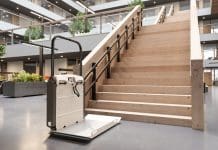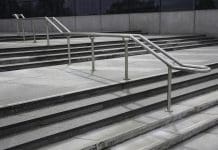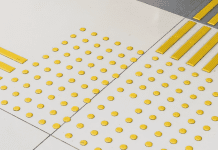Ian Streets from About Access discusses accessibility issues, ranging from public transport to building design and construction
Personal struggles with accessibility issues often shed light on the larger issue. The diaries of seven disabled people provided the inspiration for an article on The Guardian website which is compelling reading for all.
Frances Ryan, whose specialist subjects as a journalist include disability, asked the seven to document their everyday experiences. What was perhaps even more telling than the accounts of obstacles to working, shopping, using public transport and more was the recognition, for the first time in their lives, that they were consciously noting the inequality that they regularly face.
The article examined a variety of scenarios, some in which facilities were found lacking and others where service provision was short of the mark, particularly where it was designed to make up for the inadequacy of amenities.
The value of the piece as feedback from users is enhanced by the routine, no-fuss reporting style. There’s a resignation, which shouldn’t be confused with acceptance. There’s frustration and there’s gallows humour, particularly when the interviewees share experiences of comic moments, such as the shocked stares of onlookers when a wheelchair user shows they are capable of standing: “It’s a miracle!”
Public transport emerges as a particular minefield, with Shona Cobb telling how she nearly found herself stuck on a train on three separate occasions after wheelchair ramp assistance which had been booked in advance was not provided.
Nina Grant speaks of “facing an accusing set of faces” when she had to compete with a woman and buggy for space on a bus. Back on the trains, accessibility problems were exacerbated by careless passengers creating obstructions with carelessly-placed luggage.
Nina also describes the problems she faces getting into shops when she is met with large steps or raised door frames. Other diaries tell of difficulties navigating round retail displays which are squeezed into a cramped, poorly-designed layout.
Shona was shocked to find that a branch of River Island in London did not have a disabled changing room. When she asked why a new Topshop had stairs but no lift, she was told it would “inconvenience” other people.
The social scene is no less problematic. Nina said: “Every social invitation tends to require calling or emailing the venue to find out about accessibility – and then usually having to explain to the host why I can’t come!”
The article was prompted by a study by the Equality and Human Rights Commission which found that disabled people are “left behind”. It also cites a report from the United Nations which condemned the UK government for failing to uphold disabled people’s rights across areas including education and work. It concluded that whilst the 2012 Paralympics may have created the impression that the UK is moving forward with its treatment of disabled people, their lives are still “riddled with barriers”.
In emphasising the lack of progress, The Guardian refers to the government’s last major audit, carried out in 2014, which branded access for Britain’s disabled people as “shocking”. The survey of more than 30,000 shops and restaurants found 20 per cent of shops had no wheelchair access, only 15 per cent of restaurants and shops had hearing loops and 75 per cent of restaurants did not cater for people with visual impairments.
The research is thorough and covers various impairment groups, highlighting commonplace situations which non-disabled people take for granted, but which can present insurmountable challenges for people who have an impairment.
The problems are all straightforward issues which could be overcome with decent customer service, improved awareness and foresight, and a bit of common sense.
Hopefully the article itself, with its call for a cultural shift and greater visibility of disabled people in the media and politics, will encourage a more open and thoughtful approach.
As the people designing, constructing or refurbishing buildings, please remember that these are some of the individuals who will be using those facilities. You are not going to be in the front line, having to face angry disabled people who can’t get into a building because you haven’t anticipated their needs effectively enough. Your client will have to deal with the problem, and they might remember who created it.
Please read the article and think about what you could do to make your design and your buildings stand out for the right reasons and be recognised as best practice and significantly more accessible than the norm.
To read it in full please visit: https://www.theguardian.com/inequality/2017/nov/15/whats-life-really-like-for-disabled-peopld-disability-diaries-reveal-all
More from About Access can be read on their stakeholder page.













